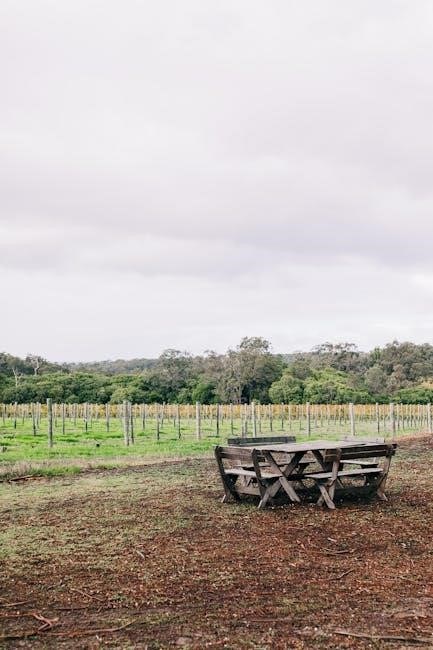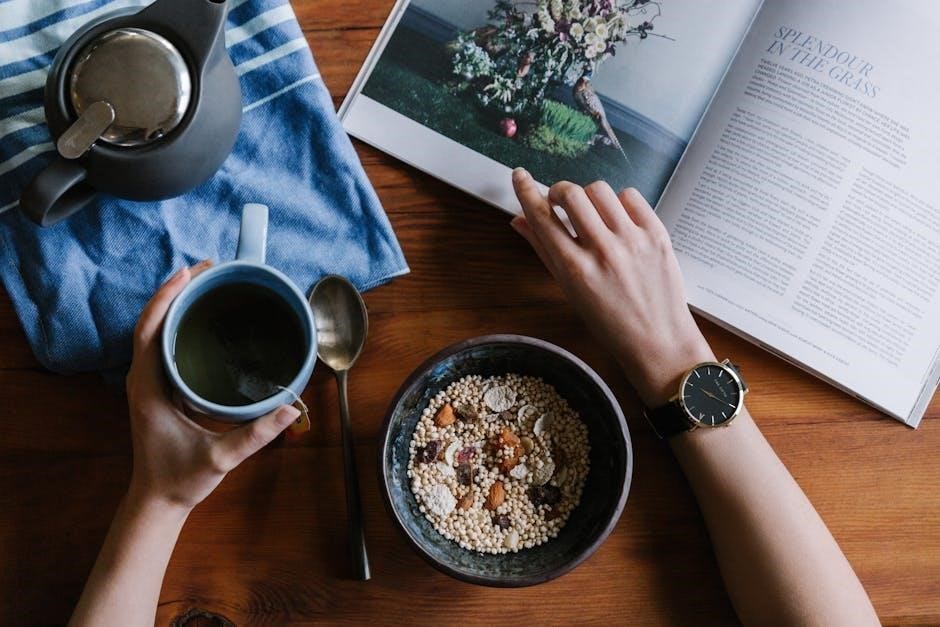timber span tables australia pdf
Understanding Timber Span Tables in Australia
Timber span tables in Australia are essential tools that provide guidance on the maximum allowable distances between supports for timber members. These tables consider factors such as timber species, stress grade, and load conditions, aiding in safe construction.
What are Timber Span Tables?
Timber span tables are reference charts derived from engineering principles and Australian Standards like AS 1684, offering pre-calculated maximum spans for various timber sections used in construction. These tables simplify the selection process for beams, joists, and rafters, based on specific loading conditions and timber properties. They consider the clear distance between supports. They are crucial for ensuring structural integrity and compliance with building codes, providing builders and designers with a reliable resource. They are often used in conjunction with manufacturer’s specifications for their products.
Importance of Australian Standards
Australian Standards are vital for ensuring structural safety and compliance in building practices. They provide guidelines and specifications that underpin the use of timber span tables, guaranteeing consistent and reliable construction outcomes.
AS 1684 and Timber Span Tables
AS 1684, the Australian Standard for residential timber-framed construction, directly relates to timber span tables; These tables are developed in accordance with AS 1684, offering clear guidance on appropriate timber sizes and spans for various building elements. The standard ensures that structures are built safely. The standard also adheres to minimum performance requirements. This helps account for factors like load-bearing capacity. Consulting AS 1684 alongside span tables enables compliant design. Always cross-reference tables with current standards.
Compliance with Building Codes of Australia
Using timber span tables is vital for ensuring compliance with the Building Codes of Australia (BCA). These tables provide design parameters that meet structural requirements specified in the BCA. Adhering to span tables helps guarantee safety. It also ensures the durability of timber structures. This means that the structures align with legal standards. Local variations may exist. Consulting the relevant sections of the BCA in conjunction with the tables is crucial for achieving full compliance. This ensures robust and safe timber construction.
Factors Affecting Timber Span
Several factors affect timber span, including timber species, stress grade, load width, spacing, moisture content, and service conditions. Understanding these elements ensures accurate span calculations and safe structural design using timber span tables.
Timber Species and Stress Grades
Timber species significantly impact span capabilities due to varying densities and inherent strengths. Higher stress grades, like F17, indicate greater load-bearing capacity. Timber span tables clearly specify allowable spans for different species and stress grades. Radiata pine, merbau, and various hardwoods each possess unique structural properties that influence their performance. Selecting the appropriate timber species and stress grade, referencing timber span tables, is crucial for ensuring structural integrity and safety in construction projects. Always consult relevant Australian Standards and local building codes.
Load Width and Spacing Considerations
Load width, referring to the area over which a load is distributed, affects timber span requirements. Wider load widths generally necessitate shorter spans to maintain structural integrity. Member spacing, such as the distance between joists or rafters, also influences span capabilities. Closer spacing allows for increased load distribution, potentially permitting longer spans. Timber span tables often provide span values based on specific load widths and spacing configurations. Correctly assessing these factors, alongside Australian Standards, ensures the selected timber section can safely support the intended loads. Therefore, careful consideration is essential during design.
Moisture Content and Service Conditions
The moisture content of timber significantly impacts its strength and stiffness, therefore influencing allowable spans. Timber span tables usually assume specific moisture content levels, often related to seasoned timber. Service conditions, encompassing environmental factors like humidity and exposure to weather, must also be considered. Timber used in damp or exposed environments may experience changes in moisture content, affecting its structural performance. It’s crucial to select timber species and treatments appropriate for the intended service conditions. Consulting Australian Standards and manufacturer guidelines ensures accurate span calculations, accounting for moisture content and environmental influences.

Types of Spans
Timber span tables differentiate between single span beams and continuous span beams. Single spans are supported at two points, while continuous spans have three or more supports, affecting load distribution and maximum allowable spans.
Single Span Beams
Single span beams are characterized by being supported at only two points along their length. When consulting timber span tables, it is important to interpret the “span” as the clear distance between these supports. These tables provide maximum span values specific to single span configurations. Joists crippled over supports should be treated as single span joists. Ensure compatibility with Taranakipine timber products when using associated span tables for single spans.
Continuous Span Beams
Continuous span beams, unlike single span beams, are supported at three or more points along their length, enhancing their load-bearing capacity and reducing deflection. Timber span tables provide specific values for continuous spans, but these values are conditional. The tables should only be used when the beam is supported at multiple points. Span values should only be used where specified.

Applications of Timber Span Tables
Timber span tables find diverse applications in Australia, including decking, roof framing, and floor joists. These tables ensure structural integrity by providing the correct timber sizes and spans for specific load requirements.
Decking and Balconies
When designing decking and balconies in Australia, timber span tables are crucial for ensuring safety and structural integrity. These tables help determine the appropriate size and spacing of joists and bearers, considering factors like load width and timber species. Consulting span tables from manufacturers like Woodhouse Weatherproof and Hyne Timber will ensure compliance with Australian standards. Correct application of span tables ensures a safe and durable outdoor space for both residential and commercial properties.
Roof Framing
Timber span tables play a vital role in designing roof framing for Australian buildings. These tables help determine the correct size and spacing of rafters and beams, ensuring the roof can withstand anticipated loads. Factors such as roof pitch, wind classification, and timber stress grade are critical considerations. Referring to span tables from suppliers like Meyer Timber and consulting AS 1684 are essential. Correct use ensures structural safety and compliance with building codes, creating a durable and safe roofing system for both residential and commercial construction projects.
Floor Joists and Bearers
When designing floor systems in Australia, timber span tables are indispensable for selecting appropriate joist and bearer sizes. These tables consider factors like joist spacing, floor load, and timber species, ensuring the floor can support intended loads without excessive deflection. Resources such as meyPINE3 span guides and AS 1684 offer detailed specifications. Span tables help choose dimensions for seasoned softwood joists in residential internal floors. Correct application of these tables leads to structurally sound and code-compliant floors. Consulting manufacturer tables and design standards will achieve optimal performance and long-term stability.

Where to Find Timber Span Tables
Timber span tables can be found on manufacturer websites such as Hyne and Meyer Timber. Industry associations and publications also provide valuable resources. These tables are critical for structural design and compliance.
Manufacturer Websites (e.g., Hyne, Meyer Timber, Woodhouse)
Leading timber manufacturers like Hyne, Meyer Timber, and Woodhouse provide detailed span tables on their websites. These resources are tailored to their specific product ranges and offer valuable information for structural design. The tables often include specifications for different timber grades, sizes, and loading conditions, ensuring accurate and safe application. Accessing these manufacturer-specific span tables allows builders and engineers to select the appropriate timber dimensions for various construction projects, adhering to Australian standards and building codes. These tables are usually available in PDF format for easy download and reference.
Industry Associations and Publications
Industry associations and publications are another crucial source for obtaining timber span tables in Australia. Organizations such as the Timber Development Association and relevant building publications often provide comprehensive guides and technical documents. These resources compile span tables that comply with Australian standards and building codes. They may also include detailed explanations of the factors influencing timber span, such as load width, spacing, and moisture content. Many of these publications are available in PDF format, offering accessible and reliable information for builders, designers, and engineers seeking accurate span data for their projects.

Engineered Wood Products
Engineered wood products, like LVL and Glulam, offer enhanced strength and span capabilities. Their span tables, often available in PDF format, provide specific guidance for their use in Australian construction projects.
LVL (Laminated Veneer Lumber)
LVL, or Laminated Veneer Lumber, is an engineered wood product known for its high strength and stiffness. Span tables for LVL, often found in PDF documents, are crucial for structural design in Australia. These tables detail allowable spans based on load, species, and grade. Manufacturers like Hyne and Tilling offer LVL span guides. SmartLVL is a popular choice, with dedicated selection guides available. These resources aid engineers and builders in determining appropriate LVL sizes for various applications, ensuring structural integrity and compliance.
Glulam (Glued Laminated Timber)
Glulam, short for Glued Laminated Timber, is an engineered wood product offering exceptional strength and design flexibility. In Australia, span tables for Glulam are vital for structural applications. These tables, often available in PDF format, specify maximum spans based on load, grade, and species. Abodo Wood provides Vulcan GL8 span tables; Tilling Group also supplies Glulam beams. Design considerations align with AS1720.1-2010. These resources assist engineers and builders in selecting appropriate Glulam sections, ensuring safe and efficient designs for residential and commercial projects.
